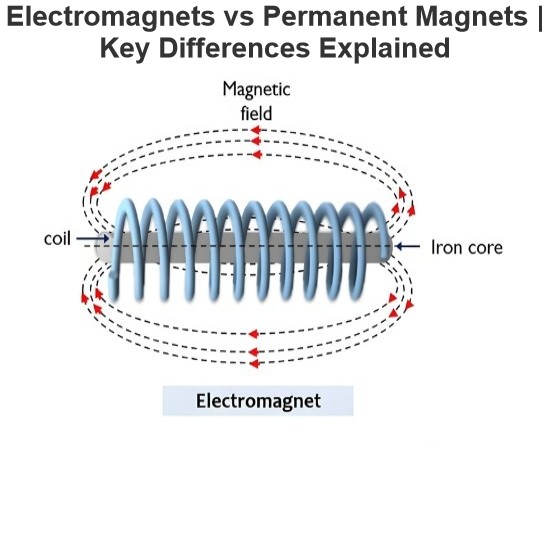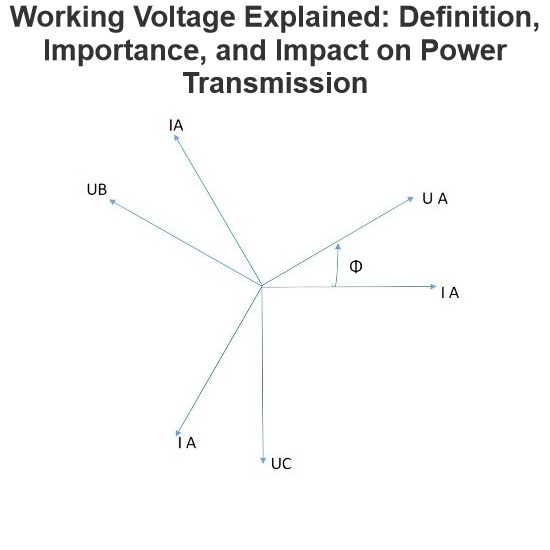Usa ka kasayuran nga wala gyud maoy ang tanang elektrisyan kailangan mokuha sa pagsabot sa electrical meter. Maswerte, wala gyud kini ang kasinatian.
Kon imo pag-aspirar maging elektisyan o interesado ka makuha ang trabaho, importante nga mahibalo nimo unsaon pagbasa sa multimeter bago mo padayon sa pagbasa.
Ang unang matubag nimo sa multimeter mao ang duha ka probes nga nagkalantad, ug usa ra niini mahimong gamiton sa pag-test sa voltage, amperage, o resistance.
Kailangan gyud ang duha ka probes tungod kay ang uban nga measurements nagkinahanglan og duha ka probes; sila usab kinahanglan og power connection gamit ang duha ka wires. Ang tulo ka pangunahan nga tipo sa readings mao ang voltage (V), current (I).
Multimeter Basics
Ang multimeter sama sa ruler para sa distance, stopwatch para sa oras, o scale para sa weight, usa ka makapugos nga tool sa pag-measure sa electricity.
Bisan kon lain-lain kini sa uban nga instrument, mahimong usab kini gamiton sa pag-measure sa daghang cantidad; dinhi, sama sa pagkuha og daghang separate measuring instruments sa usa ka convenient package. Ang majority sa mga device niini adunay front-mounted dial nga mahimong i-adjust aron mapugos ang daghang measurement types sama sa current, voltage, ug resistance.
Multimeter Features
Ingat nga ang continuity check feature sa imong multimeter makatabang nimo sa pag-determine kon duha ka bagay electrically connected.
Connect ang test probes sa dako sa imong device under test, pagkatapos ipalit. Imong meter mag-alarma kon full circuit nakahimo sa iyang probes; labaw na, silent siya.
Ang usefulness sa multimeter wala limitado sa pag-measure sa current ug voltage. Usa pa, ang uban sa mga device niini measure efficiency sa pag-check sa components sama sa diodes, capacitors, ug transistors. Ingat nga check ang owner’s manual bago mo-attempt sa paggamit sa anaa nga functions nga wala ka familiar.
Multimeter Setting
Arta sa paggamit sa imong multimeter, kinahanglan nimong familiarize sa iyang daghang settings ug acronyms. Unsaon, pili kung volts (V), amps (A), o ohms (Ω). Pili ang V setting kon imong current alternating; pili ang A setting kon direct. Kon ang indicator nag-green sa uban sa appropriate reading scale, ang dial nakahuman sa correct position sa pag-measure sa resistance (.001-100kohm range max).
Kon tanang section green, mahimong mo-proceed sa measurement bisan wala ka sure kon asa ang ihatag sa asa.
Pwede ka mogdag og lisud sa scale kon mas precise imong gihatagan ang voltage. Kon imong multimeter mahimong iset sa 20 volts, hinaut ang value nga imong gamiton alang niining test.
How to Measure With a Multimeter
Ang tanang multimeters mahimong gamiton sa pag-measure sa current, voltage, ug resistance. Para sa imong convenience, miapil nami ang definitions sa sumala nga terminologies sa ubos. Kon imo gi-need ang help sa pag-sulay sa paggamit sa multimeter.
Makatabang kini sa pag-build sa circuits o soldering wires sa lugar sa pagka-beep sa loud nga sound kon duha ka bagay electrically connected.
Mahimong gamiton kini aron sigurado ka nga walay misklas nga koneksyon, kasagaran resulta sa short circuit ug damage.
Kinahanglan sa pag-assemble sa circuits ang pagkahibalo sa diodes ug ilang aplikasyon. Sama sa one-way valve, ang diode mahimong pagtumong sa current sa usa ra direksyon.
Kon wala ka siguro kon asa ang direction sa imong component nga isulod sa circuit o kon functional siya, ang multimeter nga adunay kini nga functionality makatabang nimo. Sa kasagaran, ingat nga check ang owner’s manual bago mo-attempt sa paggamit sa kini nga feature.
Kon interesado ka sa pagkuha og multimeter, importante nga mosabot kon unsa nga functions ang must-haves. Consider ug upgrade sa mas sophisticated model kon imo gi-need sa daghan nga tasks, sama sa pag-determine sa value sa capacitor o transistor.
Amps, Volts, and Ohms
Kinahanglan sa pag-understand sa daghang fundamentals sa electricity bago mo-play around sa multimeter.
Ang mga voltaic pushes mahimong sukol sa amps, kon mas daghan nga current naglisud sa given obstacle (sama sa lightning strike, pirmi) kon usual, ang obstacle adunay mas taas nga amp rating.
Ang electrical voltage, o ang “push” sa electrons samtang molisud sa circuit, mahimong sukol sa volts. Gamiton ang familiar metaphor sa tubig nga molisud sa downstream, ug supposing ang voltage represent ang pressure nga nag-drive sa river, makakita kita sa nahitabo.
Ang resistance sa circuit mahimong sukol sa ohms, ug mas taas nga value nag-imply nga mas liit ang energy nga gitawag sa section sa circuit.
A Multimeter for Voltage Measuring
Ania ang unsaon paggamit sa multimeter aron mahatagan ang voltage.
Ang voltage nga imo makita gamit ang voltmeter sa balay presumable nga alternating current. Ang DC measurement mahimong gibuhat sa car battery o uban pa nga DC-powered device.
Palihog check kon ang selection switch set sa correct voltage. Ang symbol sa alternating current mao ang sine wave, ang DC symbol mao ang solid line ug dashed line sa uban.
Make a connection between the multimeter’s black probe and its COM port.
Ensure that you are working at full power by setting your voltage selector to its highest level. Remember that mV stands for thousandths of a volt, and select the lowest setting here.
Safety gloves should be worn at all times when testing alternating current to prevent electrocution.
Start your car or flip a breaker to power on the item you’re testing.
When taking a reading, insert the black probe into one of the component’s terminals and the red probe into the other.
If the reading is unclear, try the next highest setting on the selector until you reach the maximum that can be recorded.
Analyzing AC Voltage Measurement
The voltage is usually lower than it should be. The good news is that this can be easily measured using a multimeter. Since not every plug or connector is compatible with every other, you just need two probes and some extra time to find the right connections in your gadget.
It is reasonable to anticipate a -10% to +5% variation in any given alternating current power supply. Even at a single point of connection, there is still some room for error in voltage readings, but as long as the average is within the acceptable range, everything should continue to operate normally.
Conclusion
Wala gyud ang requirement nga ang tanang elektrisyan kinahanglan mokuha sa pagsabot sa electrical meter. Ang voltage (V), current (I), ug resistance (R) ang tulo ka pangunahan nga measurements (R). Ang duha ka probes sa multimeter mahimong gamiton sa pag-measure sa voltage, current, o resistance. A Guide to Using a Multimeter. Ang virtual tanang multimeter adunay tulo ka separate measuring functions: current, voltage, ug resistance.
Kon imo gi-need sa multiple purposes, mahimong invest sa mas high-end version. Importante nga firm grasp sa fundamentals sa electricity bago mo-mess around sa multimeter. Sa balay, ang voltmeter dapat mag-reveal sa alternating current sa pag-measure sa voltage. Ang DC measurement mahimong gibuhat sa car battery o uban pa nga DC-powered device. Wala gyud ang room sa error sa voltage readings, sa usa ra point of connection.
Content Summary
Usa ka kasayuran nga wala gyud maoy ang tanang elektrisyan kailangan mokuha sa pagsabot sa electrical meter.
Kon imo pag-aspirar maging elektisyan o interesado ka makuha ang trabaho, importante nga mahibalo nimo unsaon pagbasa sa multimeter bago mo padayon sa pagbasa.
Ang unang matubag nimo sa multimeter mao ang duha ka probes nga nagkalantad, ug usa ra niini mahimong gamiton sa pag-test sa voltage, amperage, o resistance.
Connect ang test probes sa dako sa imong device under test, pagkatapos ipalit.
Ingat nga check ang owner’s manual bago mo-attempt sa paggamit sa anaa nga functions nga wala ka familiar.
Arta sa paggamit sa imong multimeter, kinahanglan nimong familiarize sa iyang daghang settings ug acronyms.
Pwede ka mogdag og lisud sa scale kon mas precise imong gihatagan ang voltage.
Kon imong multimeter mahimong iset sa 20 volts, hinaut ang value nga imong gamiton alang niining test.
Ang tanang multimeters mahimong gamiton sa pag-measure sa current, voltage, ug resistance.
Kon imo gi-need ang help sa pag-sulay sa paggamit sa multimeter.
Kon interesado ka sa pagkuha og multimeter, importante nga mosabot kon unsa nga functions ang must-haves.
Ang voltage nga imo makita gamit ang voltmeter sa balay presumable nga alternating current.
Ang DC measurement mahimong gibuhat sa car battery o uban pa nga DC-powered device.
Palihog check kon ang selection switch set sa correct voltage.
Make a connection between the multimeter’s black probe and its COM port.
Ensure that you are working at full power by setting your voltage selector to its highest level.
Safety gloves should be worn at all times when testing alternating current to prevent electrocution.
Start your car or flip a breaker to power on the item you’re testing.
The voltage is usually lower than it should be.






















